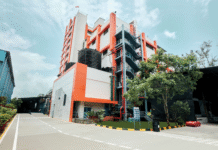A guideline for evaluating inks suitable for food packaging is that it is binding on all suppliers to printers and converters of packaging laminates that the ingredients used in producing food packaging do not impact food content adversely and deteriorate its quality in any way.
Managing director of Sakata Inx India says, “The printer and food packagers always have the expectation that inks should be compliant to all important global and local regulations for food packaging safety. However, since regulations of the industry vary across the globe, Sakata Inx as a leading ink supplier always stands for food safety and strives to comply with all the regulatory aspects on food packaging by introducing the right technology.”
Sakata supplies Bellecolor which is one of the best gravure ink systems presently being used in the Indian market. Sakata is leader in the food packaging flexible segment and its Bellecolor is a Toluene and Ketone free lamination grade one ink system suitable for all laminations up to retort packaging for food. It was introduced almost a decade ago in the Indian market.
Additionally, this ink system has a minimal residual odor which is quite suitable for indirect food contact packaging. It ensures that there is no migration of any monomeric ingredient and hence there is no contamination of food through packaging from ink.
Accepting Nestlé’s requirements
Accepting the rigid requirements from Nestlé, Sakata’s XGL-0415 SR Ink System which has no PVC in the ink has been implemented from January 2022. Sakata took a proactive initiative for sustainable inks for food packaging and has already given this suitable option to Indian flexible packaging converters as a PVC free ink system. It does not contain PVC either in homopolymer or copolymer form.
In addition, this lamination grade ink system is also Toluene and Ketone free with minimal residual odor in the laminates. It has already been approved by Nestle and successfully launched in Indian Market.
Seth adds further explains, “For surface applications also, we have established our Toluene free NT-60 ink system for wraparound labels and the NT-SP-PVC for Shrink PET and Shrink PVC applications. In the gravure segment we strictly comply with the IS 15495 including Swiss Ordinance requirements.”
For sustainability compliance, Sakata has introduced washable inks, biomass base inks and various coatings to ensure minimum oxygen transmission and water vapor transmission. Through these coatings, similar polymeric combinations can be used to produce packaging laminates for food packaging, which ensure proper recycling of laminates.
For offset printed food monocartons
In the offset segment, Sakata has introduced its mineral oil and dryer-free Ecopure I HP-Evolve inks. The SF ink is suitable for printing the non-food contact surface of food packaging made of paper and board. It does not contain any mineral oils and driers and therefore, aldehydes being generated during the oxidation drying process cannot form or be produced.
Seth adds, “It must be kept in mind that it is the aldehydes produced in the drying process that are responsible for changing organoleptic behavior of food items. The dryer-free Ecopure I HP-Evolve inks are 100% based on vegetable oils and its derivatives. This ink is also considered more renewable than normal VOC free Inks.”












